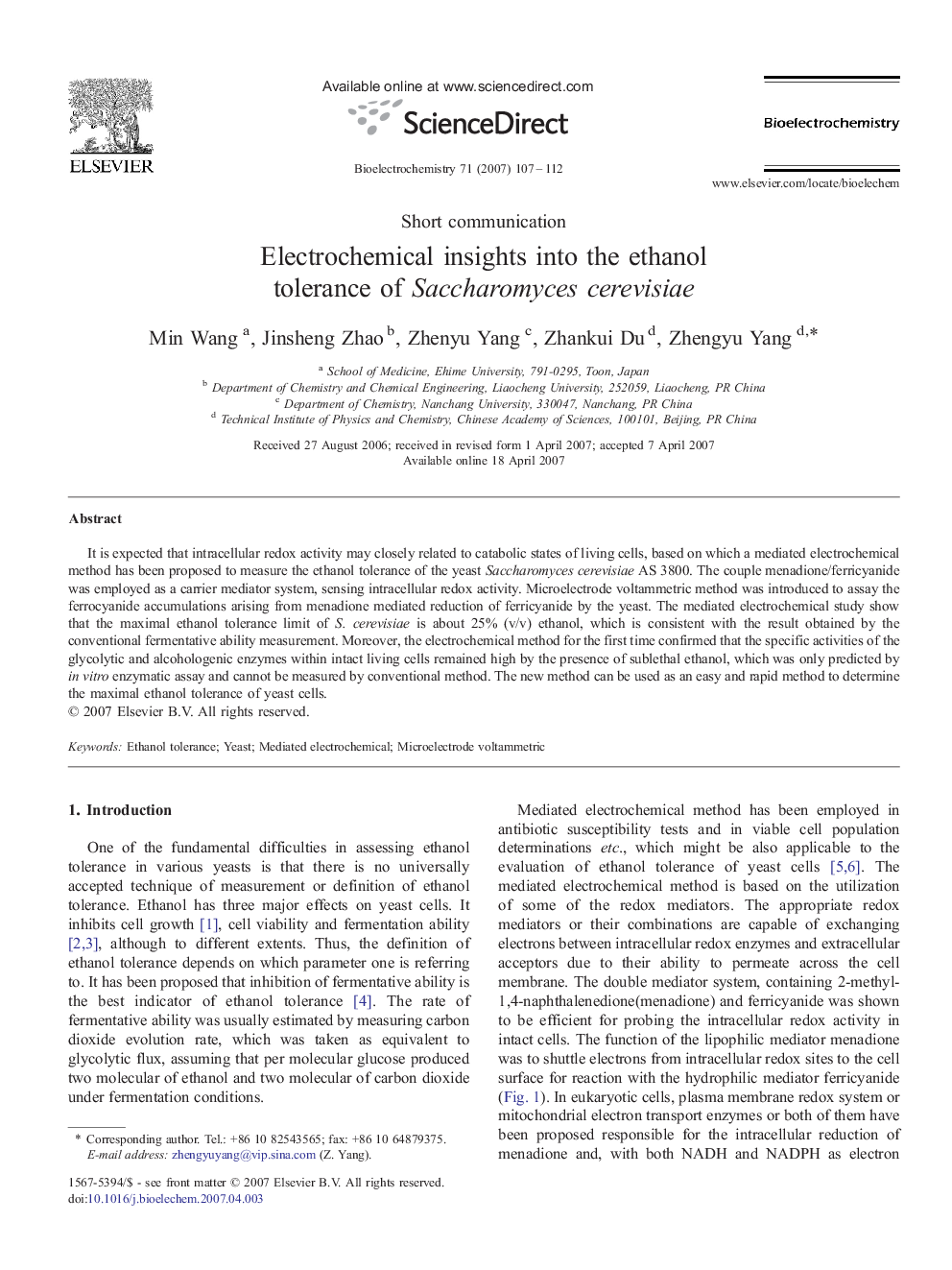| Article ID | Journal | Published Year | Pages | File Type |
|---|---|---|---|---|
| 1269181 | Bioelectrochemistry | 2007 | 6 Pages |
It is expected that intracellular redox activity may closely related to catabolic states of living cells, based on which a mediated electrochemical method has been proposed to measure the ethanol tolerance of the yeast Saccharomyces cerevisiae AS 3800. The couple menadione/ferricyanide was employed as a carrier mediator system, sensing intracellular redox activity. Microelectrode voltammetric method was introduced to assay the ferrocyanide accumulations arising from menadione mediated reduction of ferricyanide by the yeast. The mediated electrochemical study show that the maximal ethanol tolerance limit of S. cerevisiae is about 25% (v/v) ethanol, which is consistent with the result obtained by the conventional fermentative ability measurement. Moreover, the electrochemical method for the first time confirmed that the specific activities of the glycolytic and alcohologenic enzymes within intact living cells remained high by the presence of sublethal ethanol, which was only predicted by in vitro enzymatic assay and cannot be measured by conventional method. The new method can be used as an easy and rapid method to determine the maximal ethanol tolerance of yeast cells.
